
Beijing, sometimes called as Peking, is the capital of the People’s Republic of China and one of the most populous cities in the world, which located in northern China.Beijing is the second largest Chinese city by urban population after Shanghai and is the nation’s political,cultural and educational center. It is a major hub for the national highway, expressway, railway and high -speed rail networks. The Beijing Capital International Airport is the second busiest in the world by passenger traffic. According to the related data which showed there are over 330,000 foreign students came to China since the year of 2011. Beijing, as the first place to study for foreign students, the number of foreign students is increasingly rapid, this city would meet your all needs if you come here and will become your second hometown.
Sanya is the southernmost city on Hainan Island, and one of the three prefecture-level cities of Hainan Province, in Southeast China. According to the 2010 Census, the population of Sanya is of 685,408 inhabitants,[1] living in an area of 1,919.58 square kilometres (741.15 sq mi). The city is renowned for its tropical climate and has emerged as a popular tourist destination, also serving as the training site of the Chinese national beach volleyball team. Sanya is home to small concentrations of Utsul people.
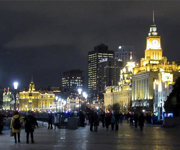
Located in the Yangtze River Delta in East China, Shanghai sites at the mouth of the Yangtze in the middle portion of the Chinese coast, the climate in this city is humid and good for people’s heath. Its traffic is very convenient for people’s life. For centuries a major administrative, education, shipping and trading town, Shanghai played an important role in the development of China’s economy. As a metropolis in the world, with its unique styles and features Shanghai attracted more and more foreign people, especially foreign students.Shanghai became a second largest city for students to study after Beijing.

Xiamen (Mandarin pronunciation: [ɕjâmə̌n]), also historically known as Amoy /əˈmɔɪ/, POJ Hokkien: ε̄-mûiⁿ; Ē-mn̂g, is a major city on the southeast (Taiwan Strait) coast of the People's Republic of China. It is administered as a sub-provincial city of Fujian province, with an area of 1,699.39 square kilometres (656.14 sq mi) and population of 3,531,347 at the 2010 Census. The city's urban area includes the old urban island area and covers all six districts of Xiamen (Huli, Siming, Jimei, Tong'an, Haicang and recently Xiang'an), and has a total urban population of 1,861,289. It also borders Quanzhou to the north and Zhangzhou making this a unique built up area of more than five million people. The Jinmen (Kinmen) Islands administered by the Republic of China (Taiwan) are less than 10 kilometres (6.2 mi) away.

As the capital of Guangdong province in South China, Guangzhou, serves as an important national transportation hub and trading port. Located just south of the Tropic of Cancer,Guangzhou has a humid subtropical climate influenced by the East Asian monsoon.Summers are wet with high temperatures, high humidity and a high heat index. Winters are mild and comparatively dry. Guangzhou is one of mainland China’s Leading commercial and manufacturing regions, its education level is very high, many international students apply for university which located in Guangzhou.
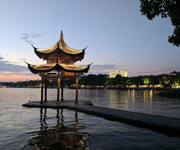
Hangzhou, as the capital of Zhejiang Province in Eastern China, Hangzhou's climate is humid subtropical with four distinctive seasons, characteristiced by long, very hot, humid summers and chilly, cloudy and drier winters (with occasional snow). Its traffic is convenient for people’s life. For foreign students, hangzhou is served by the Hangzhou Xiaoshan International Airport, which provides direct service to many international destinations such as Thailand, Japan, South Korea, Malaysia, India, Vietnam, Ethiopia, Singapore, and the Netherlands Hangzhou has a large student population with many higher education institutions based in the city. Public universities include Zhejiang University, Zhejiang University of Technology, and Hangzhou Normal University etc. Owing to different needs,more and more students come to study in this city .
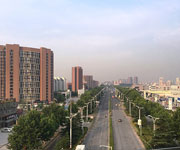
Nanjing is the capital of Jiangsu province in Eastern China. Located in the lower Yangtze River drainage basin and Yangtze River Delta economic zone, it was a prominent place in Chinese history and culture, having been the capital of China for several periods and was recognized as one of the Four Great Ancient Capitals of China. Now, Nanjing has been ranked seventh in the evaluation of “Cities with strongest Comprehensive Strength” issued by the National statistics Bureau. Nanjing has been the educational center in southern China for more than 1700 years. Currently, it boasts of some of the most prominent educational institutions in the region like China Pharmaceutical University, Nanjing University, etc. With its special characteristics, many international students choose to study in Nanjing.

Chengdu, formerly romanized as Chengtu, is the provincial capital of Sichuan province in Southwest China, as well as a major city in Western China. It holds sub-provincial administrative status. The administrative area houses 14,047,625 inhabitants: 7,415,590 within the municipality's nine urban districts and 6,632,035 in the surrounding satellite towns and counties' urban, suburb and rural area. According to the 2010 census, Chengdu is the fourth most populous city in China. Chengdu is one of the most important economic, finance, commerce, culture, transportation, and communication centers in Western China. Chengdu Shuangliu International Airport is one of the top 50 busiest airports in the world, and Chengdu Railway Station is one of the six biggest train stations in China. According to the 2007 Public Appraisal for Best Chinese Cities for Investment, Chengdu was chosen as one of the top ten cities to invest in out of a total of 280 urban centers in China. Chengdu is also popular in international company and consulates.More than 250 Fortune 500 companies and 10 consulates have established branches in Chengdu due to huge demand of Western China. In 2006, it was named China's 4th-most livable city by China Daily.
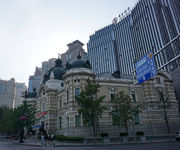
Dalian is a major city and seaport in the south of Liaoning Province, People's Republic of China. It is the southernmost city of Northeast China and China's northernmost warm water port, at the tip of the Liaodong Peninsula. Dalian is the province's second largest city and has sub-provincial administrative status; only the provincial capital (Shenyang) is larger. The Shandong Peninsula lies southwest across the Bohai Sea; Korea lies across the Yellow Sea to the east. Today, a financial, shipping and logistics center for Northeast Asia, Dalian has a significant history of being used by foreign powers for its ports: Dalian proper was previously known as both Dalny (Russian: Дальний; Dal'nii) and Dairen (Japanese: 大連) but it was better known as both Port Arthur (Russian: Порт-Артур; Port-Artur) and Ryojun (Japanese: 旅順) from its Lüshunkou district. In 2006, Dalian was named China's most livable city by China Daily.
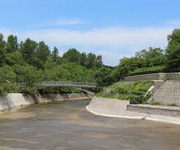
Changchun is the capital and largest city of Jilin province, located in the northeast of the People's Republic of China, in the center of the Songliao Plain. It is administered as a sub-provincial city including counties and county-level cities, with a population of 7,674,439 at the 2010 census under its jurisdiction. The city's built-up (or metro) area, including 5 districts and 4 development areas, had a population of 3,815,270 in 2010 as Shuangyang district is not conurbated yet. The name, which means "Long Spring", originated from the Jurchen language. Known as China's Automobile City, Changchun is an important industrial base with a particular focus on the automotive sector. Apart from this industrial aspect, Changchun is also one of four "National Garden Cities" awarded by the Ministry of Construction of P.R. China in 2001 due to its high urban greening rate.

Changsha (simplified Chinese: 长沙; traditional Chinese: 長沙; pinyin: Chángshā) is the capital of Hunan Province in south-central China, located on the lower reaches of the Xiang River, a branch of the Yangtze River. Its municipality covers an area of 11,819 square kilometres (4,563 sq mi) and, according to the 2010 Census, a population of 7,044,118 inhabitants. The city's urban area has a population of 3,617,469. Changsha was important from the time of the Qin dynasty (221–207 BC). In AD 750–1100 Changsha was a major commercial hub, and its population increased greatly. Under the Qing dynasty, from 1664, it was the capital of Hunan province, and it was a major rice market. It was besieged during the Taiping Rebellion but never fell. Changsha was the site of Mao Zedong's conversion to communism. It was the scene of major battles in the Sino-Japanese War of 1937–45 and was briefly occupied by the Japanese. Rebuilt since 1949, the city is now a major interior port and a commercial and industrial center.

Jinan (Chinese: 济南市) is the capital of Shandong province in Eastern China. The area of present-day Jinan has played an important role in the history of the region from the earliest beginnings of civilization and has evolved into a major national administrative, economic, and transportation hub. The city has held sub-provincial administrative status since 1994. Jinan is often referred to as the 'Spring City' for its well-known 72 artesian springs inside urban area. Its population was 6,813,984 at the 2010 census whom 4,335,989 lived in the built-up (or metro) area made up of 6 urban districts.

Zhengzhou is the capital of Henan Province located in east-central China. As a prefecture-level city, it also serves as the political, economic, technological, and educational centre of the province, as well as a major transportation hub for Central China. The city lies on the southern bank of the Yellow River, and is one of the Eight Great Ancient Capitals of China. With 8,626,505 inhabitants according to the 2010 census and 4,867,388 in its built-up area (6 urban districts + Xingyang City), the city is one of the main built up areas of Henan region. Zhengzhou is now a rapidly growing city. Greater Zhengzhou was named as one of the 13 emerging megacities or megalopolises in China in a July 2012 report by the Economist Intelligence Unit.
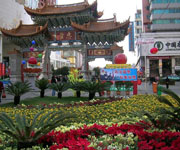
Kunming is the capital and largest city in Yunnan Province, Southwest China. Known as Yunnan-Fu (云南府, Yúnnánfǔ) until the 1920s, today it is a prefecture-level city and the political, economic, communications and cultural centre of the province as well as the seat of the provincial government. The city is also home to several universities, museums, galleries and other important economic, cultural, and educational institutions. The headquarters of many of Yunnan's large businesses are in Kunming as well. It was important during World War II as a Chinese military center, American air base, and transport terminus for the Burma Road. Located in the middle of the Yunnan–Guizhou Plateau, Kunming is located at an altitude of 1,900 metres (6,234 feet) above sea level and at a latitude just north of the Tropic of Cancer. It covers an area of 21,473 square kilometres (8,291 sq mi) and its urban area covers 2,622 square kilometres (1,012 sq mi). Kunming has population of 6,432,212, including 3,583,429 in the built-up area made up of 4 urban and 1 suburban districts, and is located at the northern edge of the large Lake Dian, surrounded by temples and lake-and-limestone hill landscapes.
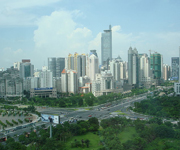
Nanning (simplified Chinese: 南宁; traditional Chinese: 南寧; Zhuang: Namzningz; meaning 'South Tranquility') is the capital of the Guangxi Zhuang Autonomous Region in southern China. It is known as the "Green City" because of its abundance of lush tropical foliage.
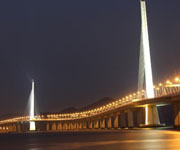
Shenzhen (Chinese: 深圳) is a major city in the south of Southern China’s Guangdong Province, situated immediately north of Hong Kong Special Administrative Region. The area became China’s first—and one of the most successful—Special Economic Zones (SEZs). It currently also holds sub-provincial administrative status, with powers slightly less than a province. According to a report published by Shenzhen Daily in 2012, Shenzhen has a population of approximately 15 million. It's one of the most built-up areas in the world and the so-called Pearl River Delta Mega City had more than 44.7 million inhabitants at the 2010 census spread over 9 municipalities (including Macao) and an area of 17,573 km2. Shenzhen’s modern cityscape is the result of the vibrant economy made possible by rapid foreign investment since the institution of the policy of “reform and opening” establishment of the SEZ in late 1979, before which it was only a small village. Both Chinese citizens and foreign nationals have invested enormous amounts of money in the Shenzhen SEZ. More than US$30 billion in foreign investment has gone into both foreign-owned and joint ventures, at first mainly in manufacturing but more recently in the service industries as well. Shenzhen is now considered one of the fastest-growing cities in the world.

Shenyang, formerly romanized as Mukden, is the capital and largest city of Liaoning Province, as well as the largest city in Northeast China by urban population. According to the 2010 census, the city's urban area has 6,255,921 inhabitants, while the total population of the Shenyang municipality is up to 8,106,171. Currently holding sub-provincial administrative status, the city was once known as Shengjing or Fengtian Prefecture. In the 17th century, Shenyang was conquered by the Manchu people and briefly used as the capital of the Qing dynasty. Along with its nearby cities, Shenyang is an important industrial centre in China, and serves as the transportation and commercial hub of China's northeast—particularly with Japan, Russia, and Korea.[9] A titan of heavy industry since the 1930s, and the spearhead of the Chinese central government's Northeast Area Revitalization Plan, the city has been diversifying its industry and now has a solid industrial foundation, a good land and air transport network, abundant natural resources, and a skilled workforce.

Suzhou, formerly romanized as Soochow, is a major city in the southeast of Jiangsu Province in Eastern China, adjacent to Shanghai Municipality. It is a major economic centre and focal point of trade and commerce, and the second largest city in the province after its capital Nanjing. The city is situated on the lower reaches of the Yangtze River and the shores of Lake Tai and belongs to the Yangtze River Delta region. Administratively, Suzhou is a prefecture-level city with a population of 4.33 million in its city proper, and a total resident population (as of 2013) of 10.58 million in its administrative area, which incorporates neighboring suburban regions and the satellite cities of Kunshan, Lianyungang, Taicang, and Changshu. Its urban population grew at an unprecedented rate of 6.5% between 2000 and 2014, which is the highest among cities with more than 5 million people. Founded in 514 BC, Suzhou has over 2,500 years of history, with an abundant display of relics and sites of historical interest. At around 100 AD, during the Eastern Han Dynasty, it became one of the ten largest cities in the world mostly due to emigration from North China. Since the 10th-century Song Dynasty, it has been an important commercial center of China. During the Ming and Qing Dynasty, Suzhou was a national economic, cultural and commercial center, as well as the largest non-capital city in the world, until the 1860 Taiping Rebellion. When Li Hongzhang and Charles George Gordon recaptured the city three years later, Shanghai had already taken its predominant place in the nation. Since major economic reforms began in 1978, Suzhou has become one of the fastest growing major cities in the world, with GDP growth rates of about 14% in past 35 years. With high per capita incomes, Suzhou's Human Development Index ratings is roughly comparable to a moderately developed country, making it one of the most highly developed and propserous cities on the Chinese mainland.
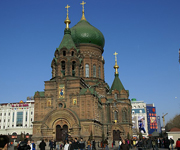
Harbin (help·info) is the capital and largest city of Heilongjiang province, People's Republic of China. Holding sub-provincial administrative status, Harbin has direct jurisdiction over 9 metropolitan districts, 2 county-level cities and 7 counties. Harbin is the eighth most populous Chinese city and the most populous city in Northeast China. According to the 2010 census, the built-up area made of 7 out of 9 urban districts (all but Shuangcheng and Acheng not urbanized yet) had 5,282,093 inhabitants, while the total population of the sub-provincial city was up to 10,635,971. Harbin serves as a key political, economic, scientific, cultural and communications hub in Northeast China, as well as an important industrial base of the nation.

Zhoushan (help·info); formerly transliterated as Chusan, is a prefecture-level city in northeastern Zhejiang province of Eastern China. One of the two prefecture-level cities of the People's Republic of China consisting solely of islands (the other is Sansha in Hainan, however its territory is in dispute), it lies across the mouth of the Hangzhou Bay, and is separated from the mainland by a narrow body of water. On 8 July 2011 the central government approved Zhoushan's as Zhoushan Archipelago New Area a state-level new area. At the 2010 census, its population was 1,121,261 whom 842,989 lived in the built-up area made of Dinghai and Putuo counties.

Jiaozuo (Chinese: 焦作; pinyin: Jiāozuò; Postal map spelling: Tsiaotso) is a prefecture-level city in northern Henan province, People's Republic of China. Sitting on the northern bank of the Yellow River, it borders the provincial capital of Zhengzhou to the south, Xinxiang to the east, Jiyuan to the west, Luoyang to the southwest, and the province of Shanxi to the north. Its population was 3,540,101 at the 2010 census whom 1,301,732 live in the built-up area made of 4 urban districts (Jiefang, Shanyang, Zhongzhan and Macun) and Bo'ai County being urbanized. Jiaozuo enjoys a humid subtropical climate with continental climate influences,winters are cool and relatively dry while summers are hot and often rainy.average temperature ranges from 0.3 °C in January to 27.5 °C in July.Extremes exist from -22.4 °C to 43.6 °C °C,precipitation averages 659mm.

Hefei, formerly known as Hofei, Luzhou, or Luchow, is the capital and largest city of Anhui Province in Eastern China. A prefecture-level city, it is the political, economic, and cultural centre of Anhui. Located in the central portion of the province, it borders Huainan to the north, Chuzhou to the northeast, Chaohu to the southeast and Lu'an to the west. Hefei has an area of 11,434.25 km2 (4,414.79 sq mi) and, at the 2013 census, a population of 7,611,000 inhabitants. Its built-up area ("metro") was home to 5,031,123 inhabitants at the 2010 census encompassing all urban districts and Feidong and Feixi counties largely being urbanized.

Qingdao (Chinese: 青岛; pinyin: About this sound Qīngdǎo (help·info); former German: Tsingtau; former official romanization: Tsingtao) is a major city in eastern Shandong Province, Eastern China. Administered at the sub-provincial level, Qingdao has jurisdiction over seven districts and five county-level cities. According to the 2010 census, the built-up (or metro) area made up of 6 urban districts and Jimo City had 5,764,384 inhabitants, while the total population of the sub-provincial city is up to 8.71 million. Lying across the Shandong Peninsula and looking out to the Yellow Sea, it borders Yantai to the northeast, Weifang to the west and Rizhao to the southwest. Qīng (青) in Chinese means "green" or "lush", while dǎo (岛) means "island". Qingdao is a major seaport, naval base, and industrial centre. The world's longest sea bridge, the Jiaozhou Bay Bridge, links the main urban area of Qingdao with Huangdao district, straddling the Jiaozhou Bay sea areas. It is also the site of the Tsingtao Brewery, the second largest brewery in China. In 2007, Qingdao was named as among China's top ten cities by the Chinese Cities Brand Value Report, which was released at the 2007 Beijing Summit of China Cities Forum. In 2009, Qingdao was named China's most livable city by the Chinese Institute of City Competitiveness.
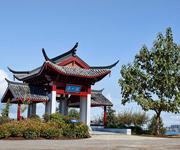
Fuzhou (Chinese: 福州; pinyin: Fúzhōu, [fǔtʂóʊ]; Fuzhou dialect: Hók-ciŭ; also formerly Minhow) is the capital and one of the largest cities in Fujian province, People's Republic of China. Along with the many counties of Ningde, those of Fuzhou are considered to constitute the Mindong (lit. East of Fujian) linguistic and cultural area. Fuzhou's core counties lie on the north (left) bank of the estuary of Fujian's largest river, the Min River. All along its northern border lies Ningde, and Ningde's Gutian County lies upriver. Fuzhou's counties south of the Min border on Putian, Quanzhou, Sanming and Nanping prefectures. Its population was 7,115,370 inhabitants as of the 2010 census, of whom 4,408,076 inhabitants are urban standing around 61.95%, while rural population is at 2,707,294 standing around 38.05 percent.
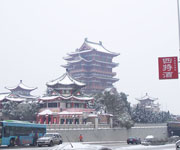
Nanchang (Chinese: 南昌; pinyin: Nánchāng) is the capital of Jiangxi Province in southeastern China, located in the north-central portion of the province. It is bounded on the west by the Jiuling Mountains, and on the east by Poyang Lake. Because of its central location relative to the Yangtze and Pearl River Delta regions, it is a major railroad hub in Southern China. Its population was 5,042,566 whom 4,171,926 in the built-up area made up of six urban districts plus the urbanized counties of Nanchang and Xinjian. As the Bayi Riot 1927 was distinctively recognized by the ruling Communist Party as "firing the first gunshot against the evil Republic of China", the current communist regime has therefore named the city since 1949 "the City of Heroes", "the place where the People's Liberation Army was born", and the most widely known "place where the military banner of the People's Liberation Army was first raised".
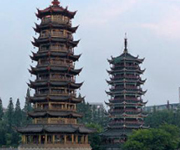
Guilin is a prefecture-level city in the northeast of the Guangxi Zhuang Autonomous Region, China, situated on the west bank of the Li River, and bordering Hunan to the north. Its name means, "Forest of Sweet Osmanthus", owing to the large number of fragrant Sweet Osmanthus trees located in the city. The city has long been renowned for its scenery of karst topography and is one of China's most popular tourist destinations.
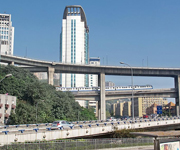

Yinchuan is the capital of the Ningxia Hui Autonomous Region, People's Republic of China, and former capital of the Western Xia Empire of the Tanguts. It has an area of 4,467 km (2,776 mi) and a total population of 1.99 million. Its built up area is home to 1,290,170 inhabitants spread on 3 urban districts. The name of the city literally means "silver river"; the character for "river" (Chinese: 川; pinyin: chuān) is the same as that in Sichuan, but not as those in, for example, the Yellow River (simplified Chinese: 黄河; traditional Chinese: 黃河; pinyin: Huánghé) or Yangtze River (simplified Chinese: 长江; traditional Chinese: 長江; pinyin: Chángjiāng).

Xi'an (Chinese: 西安; pinyin: Xī'ān), formerly romanized as Sian, is the capital of Shaanxi province, located in the northwest of the People's Republic of China, in the center of the Guanzhong Plain. One of the oldest cities in China, the city was known as Chang'an before the Ming dynasty. Xi'an is one of the Four Great Ancient Capitals of China, having held the position under several of the most important dynasties in Chinese history, including Zhou, Qin, Han, Sui, and Tang. Xi'an is the starting point of the Silk Road and home to the Terracotta Army of Emperor Qin Shi Huang. Since the 1990s, as part of the economic revival of interior China especially for the central and northwest regions, the city of Xi'an has re-emerged as an important cultural, industrial and educational centre of the central-northwest region, with facilities for research and development, national security and China's space exploration program. Xi'an currently holds sub-provincial status, administerring 9 districts and 4 counties. According to the 2010 Census, Xi'an has an urban population of 5,566,711 in its built-up area made of 7 out of 10 districts (all but Yanliang, Lintong and Gaoling not urbanized yet), while the total population of the Municipality is up to 8,467,837. It is the most populous city in Northwest China, as well as one of the three most populous cities in Western China. According to a July 2012 report by the Economist Intelligence Unit, it was recently named as one of the 13 emerging megacities, or megalopolises, in China. The report pinpoints and highlights the demographic and income trends that are shaping these cities' development.
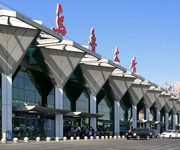
Ürümqi (/uːˈruːmtʃi/, literally "beautiful pasture", from Mongolian), is the capital of Xinjiang Uyghur Autonomous Region of the People's Republic of China in the northwest of the country. Urumqi was a major hub on the Silk Road during China's Tang dynasty, and developed its reputation as a leading cultural and commercial center during the Qing dynasty. With a built-up (or metro) population of 2,988,715 as of 2010 census (6 urban and suburban districts but Dabancheng not yet urbanized) and 3.03 million in 7 urban and suburban districts, Ürümqi is the largest city in China's western interior. Since the 1990s Ürümqi has developed economically and now serves as a regional transport node, cultural, and commercial centre.
 Immediate attention
Immediate attention